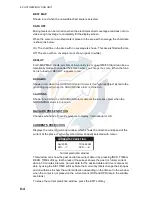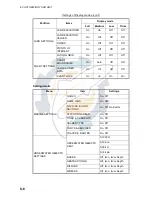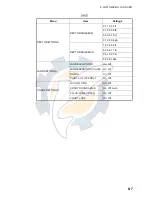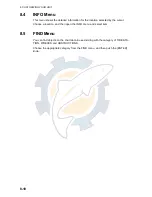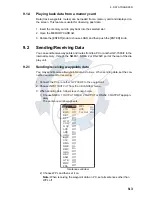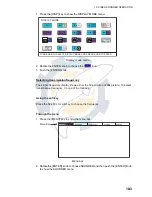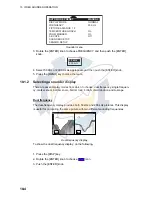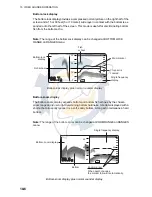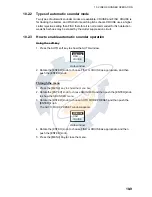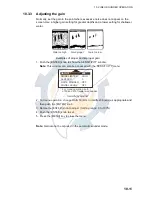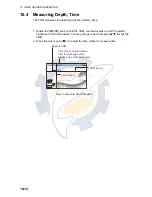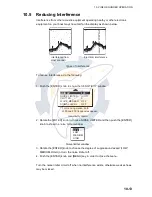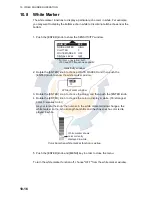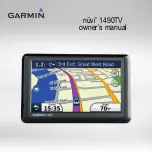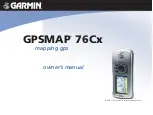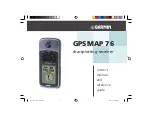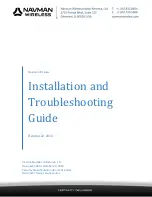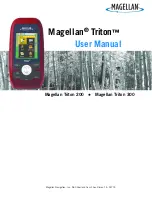
10-1
10. VIDEO SOUNDER OPERATION
This chapter covers video sounder operation. The procedures in this chapter assume
that a full screen video sounder display is selected.
Principle of Operation
The video sounder determines the distance between its transducer and underwater
objects such as fish, lake bottom or seabed and displays the results on screen. It does
this by utilizing the fact that an ultrasonic wave transmitted through water travels at a
nearly constant speed of 4900 feet (1500 meters) per second. When a sound wave is
reflected back toward the source (transducer). Thus by calculating the time difference
between the transmission of a sound wave and the reception of the reflected sound
wave, the depth to the object can be determined.
The entire process begins in the sounder. Transmitter power is sent to the transducer
as a short pulse of electrical energy. The electrical signal produced by the transmitter
is converted into an ultrasonic signal by the transducer and transmitted into the water.
Any returning signals from intervening objects (such as a fish school) are received by
the transducer and converted into an electrical signal. The signals are then amplified
in the amplifier section, and finally, displayed on screen.
The picture displayed is made up of a series of vertical scan lines, one for each trans-
mission. Each line represents a snapshot of what has occurred beneath the boat. A
series of snapshots are accumulated side by side across the screen, and the resulting
contours of the bottom and fish between the bottom and surface are displayed.
Underwater conditions and video sounder display
-
-
-
-
-
-
-
-
-
-
-
-
0
50
150
100
www.reelschematic.com
www.reelschematic.com


